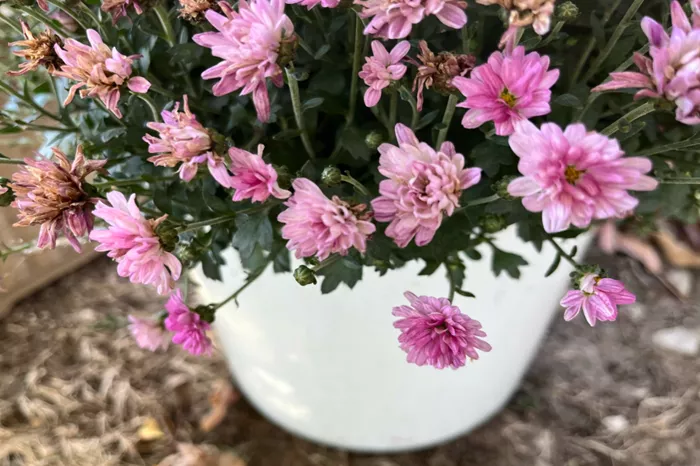Preparing Your Garden for Fall and Winter.
As cooler temperatures settle in and rain remains scarce in mid-October, gardeners are still enjoying vegetables from their plots and community gardens, like the one at the Father Buhman Center. The fall garden in raised beds will soon be ready for planting.
When your vegetable plants finish producing, it’s time for cleanup. Compost healthy plants, but if any show signs of disease or insect infestations, burn those plants to prevent spreading issues.
Keep a detailed map of this year’s planting layout. This will guide you for next year’s garden, helping you rotate crops to different spots. Consider adjusting the quantity of vegetables you grow based on this year’s results to better plan for next season.
Many people are inquiring about how to keep their mums alive through winter. It’s crucial to choose hardy mums, which thrive in USDA zones 4-9, as they establish themselves by growing stolons. In contrast, florist mums cannot survive these conditions.
The ideal time to plant hardy mums is spring, giving them ample time to develop their root systems. While fall planting is popular, those who choose this route should act quickly.
To help your fall-planted mums thrive, plant them as soon as possible. Mums need at least six hours of sunlight daily and should be placed in well-drained soil. Avoid soggy conditions; a mix of compost, sand, and silt works best.
Before planting, soak the mum’s root ball in water for 8 to 10 hours. Dig a hole larger than the root ball. After placing the plant, add soil mix and water, ensuring the roots are surrounded by soil.
After watering, apply a liquid fertilizer rich in phosphorus to promote root growth. Ferti-Lome Blooming and Rooting Fertilizer is a great choice for this. Watering first helps retain the fertilizer in the soil.
Water your mums two to three times a week to keep the soil moist and prevent air pockets that could expose roots to cold air.
Add several inches of mulch around your mums to protect the root ball during harsh winters. Water the mulch to help it integrate into the soil.
Chopped leaves, grass clippings, wood chips, or straw can be used as mulch. Spread it wider than the mum’s area to shield the roots from cold air. After the first freeze, add more mulch for added protection. Following these steps will help your mums survive the winter.
Related topics:
- Chrysanthemum Flowers Enter Harvest Time in Liupanshui, Southwest China
- Florists Slam Plans to Redesign Hong Kong Flower Market as Characterless
- Trees to Avoid Planting in Your Yard, According to an Arborist


